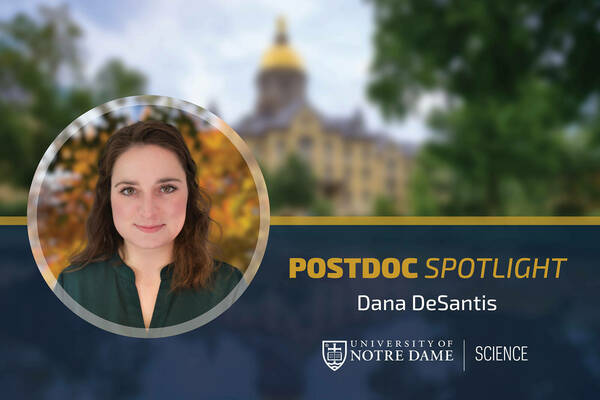What do the eyes of fruit flies and the larval development of zebrafish have in common with the human nervous system? A lot, according to postdoctoral researcher Dana DeSantis, who works in the lab of Cody Smith at the University of Notre Dame.
DeSantis received her bachelor's degree in molecular biology from Lehigh University, where she studied zebrafish skeletal regeneration. She continued studying the nervous system with a different organism in her doctoral studies at SUNY Upstate Medical University: Her neuroscience dissertation examined the genes that contribute to eye cell and tissue development in Drosophila (fruit fly).

While most would assume flies are only distantly related to humans, this research had strong translational power, as the fruit fly genome has 60% of genes in common with humans. Understanding the genetic component of eye tissue development in Drosophila can provide insight into the organization of eye tissues in humans.
Similarly, DeSantis continues to study nervous system organization and function in her postdoctoral research in the Smith lab. Smith, the Elizabeth and Michael Gallagher Associate Professor in the Department of Biological Sciences, and his graduate students and postdoctoral researchers work with zebrafish, but in a different context than in DeSantis’s undergraduate days.
“When I was done with my Ph.D, I wanted to transition back to vertebrate organisms,” she said. “Fish have spinal cords, and therefore are more closely related to humans.”
This closeness to humans allows researchers in the Smith Lab to look at the zebrafish brain and spinal cord to understand how birth defects and disease may occur in humans. Specifically, they work with the embryonic and larval zebrafish. Young zebrafish are transparent, which allows the lab team to look inside the nervous systems of the organisms in real time to better understand how neural cells are interacting and developing. They use CRISPR technology, which is like “molecular scissors” to manipulate gene expression and experimentally alter nervous system outcomes in the fish.
After her postdoctoral research at Notre Dame, DeSantis said she may pursue a role in academia, specifically in teaching. Additionally, she is passionate about science writing and communications, and sees herself working on bridging the gap between research and public knowledge in her future career.
“I think it’s really important as scientists for us to educate the public,” she said. “Scientists have an obligation to communicate these things.”
DeSantis spoke highly of the strong collaboration across labs within the department of biological sciences, especially because two of the other labs also use zebrafish in their research. She also greatly appreciated the support of her advisor, who encourages broad career interests for his postdoctoral researchers
DeSantis also complimented the University on the breadth of research undertaken here.
“The caliber of research going on here is as good as a much larger institution, which is really impressive,” she said.
Originally published by at science.nd.edu on April 21, 2022.